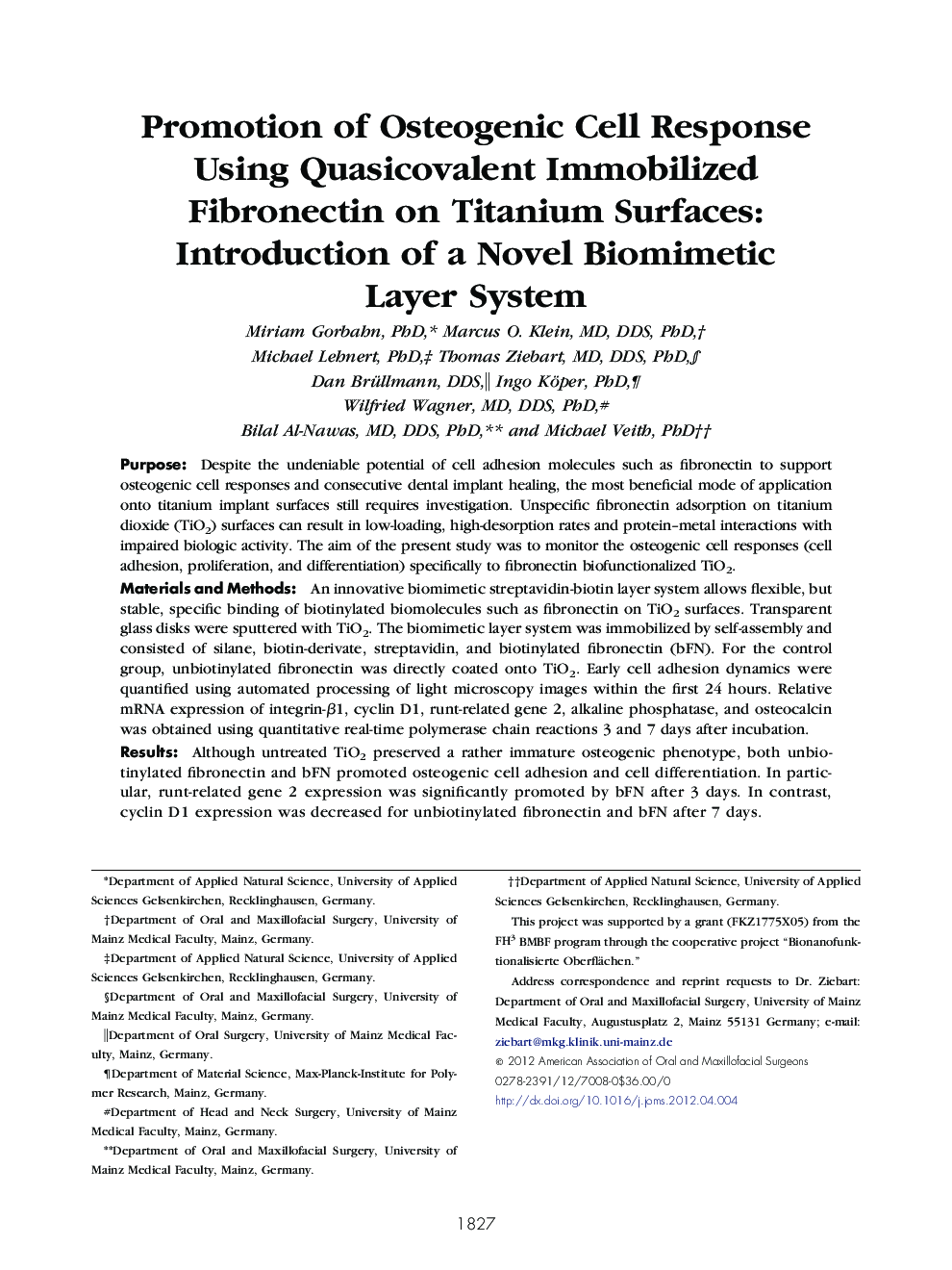| کد مقاله | کد نشریه | سال انتشار | مقاله انگلیسی | نسخه تمام متن |
|---|---|---|---|---|
| 3152956 | 1198020 | 2012 | 8 صفحه PDF | دانلود رایگان |

PurposeDespite the undeniable potential of cell adhesion molecules such as fibronectin to support osteogenic cell responses and consecutive dental implant healing, the most beneficial mode of application onto titanium implant surfaces still requires investigation. Unspecific fibronectin adsorption on titanium dioxide (TiO2) surfaces can result in low-loading, high-desorption rates and protein–metal interactions with impaired biologic activity. The aim of the present study was to monitor the osteogenic cell responses (cell adhesion, proliferation, and differentiation) specifically to fibronectin biofunctionalized TiO2.Materials and MethodsAn innovative biomimetic streptavidin-biotin layer system allows flexible, but stable, specific binding of biotinylated biomolecules such as fibronectin on TiO2 surfaces. Transparent glass disks were sputtered with TiO2. The biomimetic layer system was immobilized by self-assembly and consisted of silane, biotin-derivate, streptavidin, and biotinylated fibronectin (bFN). For the control group, unbiotinylated fibronectin was directly coated onto TiO2. Early cell adhesion dynamics were quantified using automated processing of light microscopy images within the first 24 hours. Relative mRNA expression of integrin-β1, cyclin D1, runt-related gene 2, alkaline phosphatase, and osteocalcin was obtained using quantitative real-time polymerase chain reactions 3 and 7 days after incubation.ResultsAlthough untreated TiO2 preserved a rather immature osteogenic phenotype, both unbiotinylated fibronectin and bFN promoted osteogenic cell adhesion and cell differentiation. In particular, runt-related gene 2 expression was significantly promoted by bFN after 3 days. In contrast, cyclin D1 expression was decreased for unbiotinylated fibronectin and bFN after 7 days.ConclusionsThe introduced biomimetic layer system contributes a coherent immobilization approach of adhesion molecules with promotion of osteogenic cell response in vitro.
Journal: Journal of Oral and Maxillofacial Surgery - Volume 70, Issue 8, August 2012, Pages 1827–1834